Sweynheym and Pannartz, Lactantius’ Opera Rome 1468
£68,000.00
Lactantius, Lucius Coelius Firmianus Opera: De divinis institutionibus; De ira dei; De opificio dei vel de formatione hominis; De phoenice carmen; Venantius Fortunatus; De resurrectione Christi
Conradus Sweynheym et Arnoldus Pannartz, Rome 1468
Folio. Finely printed in Roman letter, long lines, 38 to a full page, without marks. 8 fine, large painted and illuminated ornamental initials, margin of first page of text decorated, rubrications in blue and red.
Old russia gilt. Mild worming and water stains in margins of early pages, some leaves wormed and discoloured, otherwise a very good copy.
Collation: [* 12a–l 10m 8n–q 10r 12s–v 10x 8].
Analysis of Contents
[*2r] [Table of contents.] ‘Rubrice.’
[*11r] Antonius Raudensis: [Errata Lactantii.] A list of errors in the works of Lactantius.
[*12v] [Montaltus] Genuensis, Adam: [Verse censuring Antonius Raudensis.] ‘Hic male corripuit stolidis
Antonius ausis’; 4 elegiac distichs.
[a1r] Lactantius, [Lucius Coelius] Firmianus: De divinis institutionibus. Lactantius, Divinae institutions.
[s1r] [Lactantius, Lucius Coelius Firmianus: De ira dei addressed to] Donatus. Lactantius, De ira dei.
[t8r] [Lactantius, Lucius Coelius Firmianus: De opificio dei vel de formatione hominis addressed to]
Demetrianus. Lactantius, De opificio dei.
[x4r] [Lactantius, Lucius Coelius Firmianus: De phoenice carmen.]
[x6r] Ovidius [Naso, Publius]: Metamorphoses [extract].
[x6r] Dante [Alighieri: La commedia: Inferno xxv, lines 106-11]. ‘[C]ossi per li gram(!) saui se confessa | Chella
phenice muore e poi renasce’; 6 lines of verse.
[x6v] [Fortunatus, Venantius: De resurrectione Christi. Also known as Carmen de pascha; addressed to
Bishop Felix.] ‘[S]alue festa dies toto uenerabilis euo | Qua deus infernum uicit et astra tenet’; 50 elegiac
distichs. Carmen iii.9, with lines 39-40 appearing in this incunable edition as lines 1-2.
[x8v] [Verse colophon.] ‘Hoc Conradus opus Suueynheym ordine miro | Arnoldusque simul Pannarts una ede
colendi | Gente theotonico Rome expediere sodales’; 3 hexameters.
Background
In 1465 the German printers Conrad Sweynheym and Arnold Pannartz, who had worked for Johann Gutenberg in Mainz, set up the first press in Italy at the Benedictine monastery at Subiaco, about fifty miles
east of Rome. They worked there until 1467, producing three or four books. Printing soon spread to Rome itself by 1466 and to Venice by 1469.
In 1467 Sweynheym and Pannartz moved to Rome where they printed a second edition of the works of Lucius Coelius Firmianus Lactantius the following year. The Greek type used in this edition differs from their Subiaco edition of 1465, and diacritics have been added in manuscript to some of the Greek quotations. Additionally, this edition has Lactantius’s poem on the phoenix at the end, together with extracts from Ovid’s
Metamorphoses and Dante’s Commedia on the phoenix (making it the first printed book to contain a text in the Italian language, and the first to quote from Dante – two tercets from Canto XXIV of the Inferno) and the ancient Easter hymn of Venantius Fortunatus, “Salve festa dies”. It’s believed approximately 275 copies were printed.
Conrad (or Konrad) Sweynheym, a Mainz cleric and engraver, likely learned printing from either Schöffer or Gutenberg. After the Oct 1462 sack of Mainz he, along with his partner Arnold Pannartz of Cologne, joined the diaspora of printers fleeing the city and by late 1453 or early 1454 ended up at the Benedictine monastery of Santa Scholastica in Subiaco, Italy. Exactly why they came to Subiaco is not clear. Perhaps it was by the invitation of the monastery’s abbot Cardinal Giovanni of Turrecremata or perhaps it was by the urging of the German cleric and humanist philosopher Cardinal Nicholas of Cusa. Nevertheless, once at the monastery the pair possibly printed a Donatus and certainly printed Cicero’s De oratore (Sept 1465) as well as the Lactantius and Augustine’s De civitate Dei (1467). They became the first printers outside of Germany.
In 1467 Sweynheym and Pannertz received an invitation from the Marquise Pieto and Francesco Massimo to move their press to the palatial Massimo estate in Rome. By November they were established and had printed their first work, Cicero’s Epistolae ad Familiares (1467). Over the next four years, with their editor Bishop John Andreas Bussi of Aleria, they printed Latin classics, the occasional ecclesiastical title, even a five- volume Bible with commentary. According to the list published in their 1472 edition of Nicolaus de Lyra’s Postilla super Bibliam they had printed 12,475 copies of 28 titles.
Although they were rather proficient at printing books they were not particularly good at selling them. In their famous petition to Pope Sixtus VI 3 (also in the 1472 de Lyra) they wrote “We brought the printing art to
Rome. We battled against difficulties which other refused to meet, and as a result our money is spent, and our house is full of unsold quires, but enpty of the means of subsistance.”
Bishop Bussi attempted to lobby the Pope on their behalf but it was apparently unsuccessful and their partnership was dissolved in 1473. Pannartz continuing with printing and Sweynheym returned to engraving,
working up to his death on a set of plates for Buckinck’s 1478 edition of Ptolemy’s Cosmographia. For their decidedly humanist press Sweynheym cut a type based on historical Italian models. His first type
(the Subiatco or Lactantius type) was based on Roman inscriptions for the uppercase (note particularly the long tail on the Q) and Carolingian miniscules and perhaps contemporary Italian calligraphy for the lowercase.
The result, while not particularly harmonious, is nevertheless the last bridge between the gothic types and the pure Roman types. Type historians have termed it “half-Roman.” Sweynheym cut new types when they set up their press in Rome. For the new type he refined his Lactantius lowercase and created one of the first true humanist Roman typefaces. The red and blue initials (with some manuscript guide letters) and paraphs in the preliminary quire are almost identical to that in the copies now in Munich [M16542] and the Vatican [Inc.Chig.II.7], indicating that the rubrication and illumination was most likely executed in the printers’ workshop.
Provenance
Quaritch, 1939 – penciled annotation
Arthur W. Machen Sr, and then by descent to Arthur W. Machen Jr, Baltimore.10
References
Dibdin Spenc., Vol. 1 209-10, No. 93.
ISTC: il00002000
Hain: HC *9807
Goff: Goff L-2
BMC: BMC IV 4
Proctor: Pr 3291
GW M16542
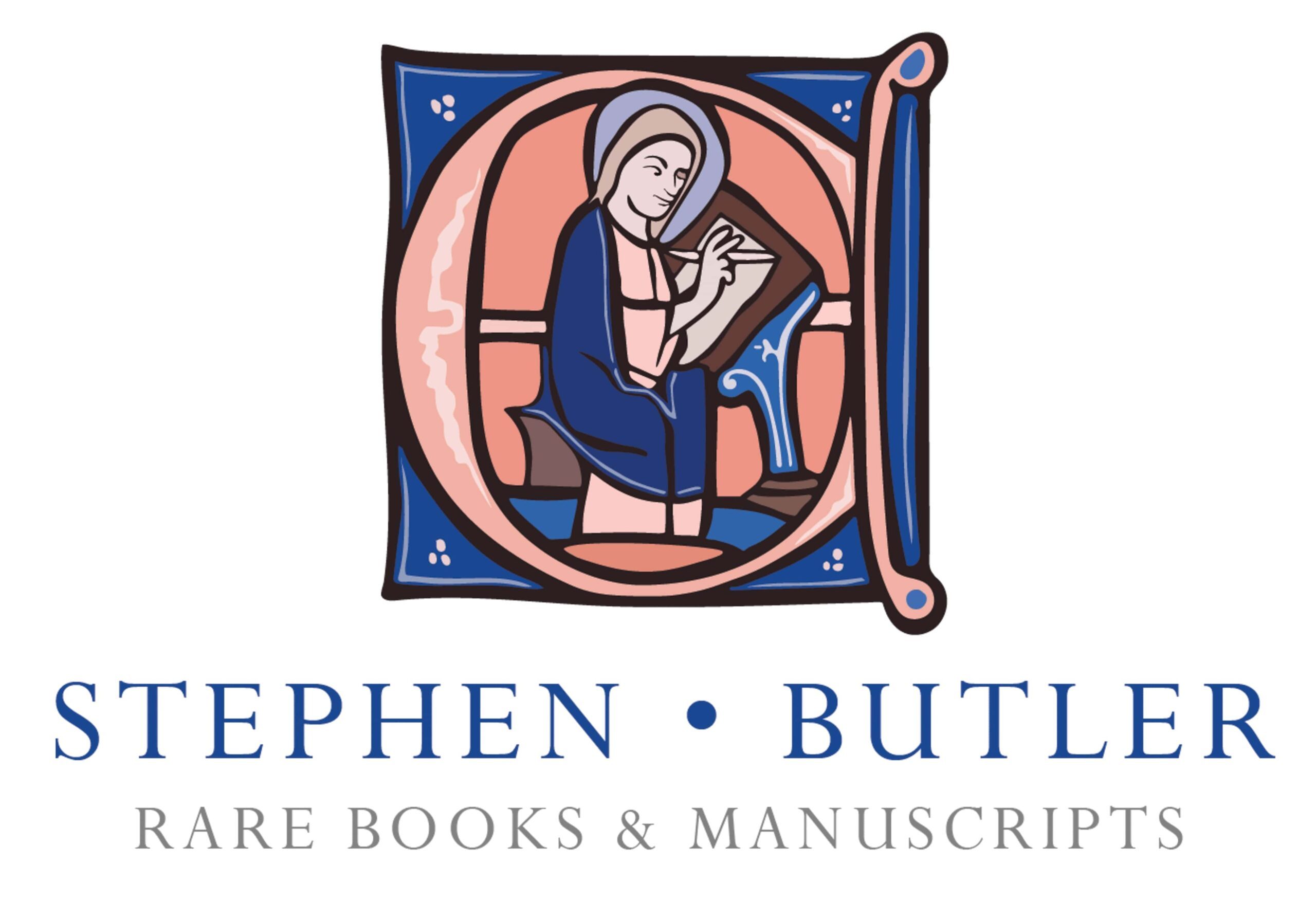

























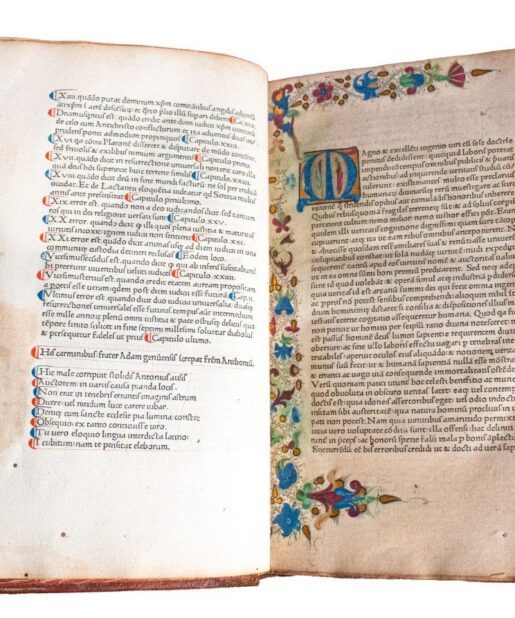
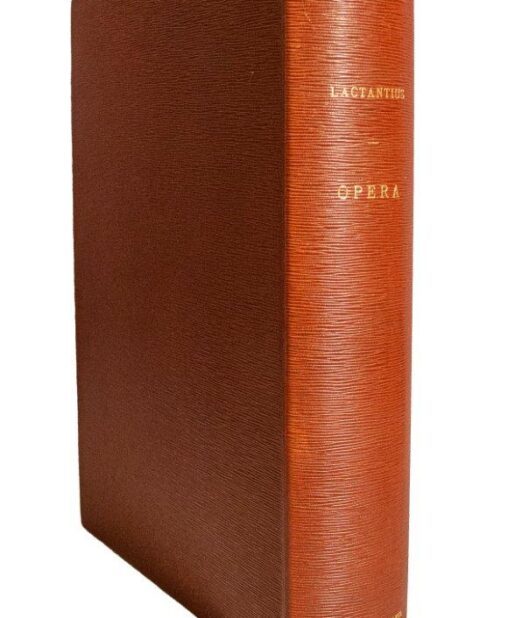
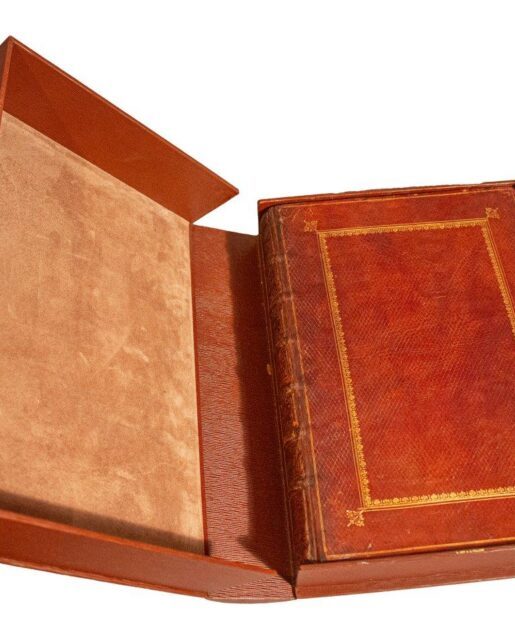
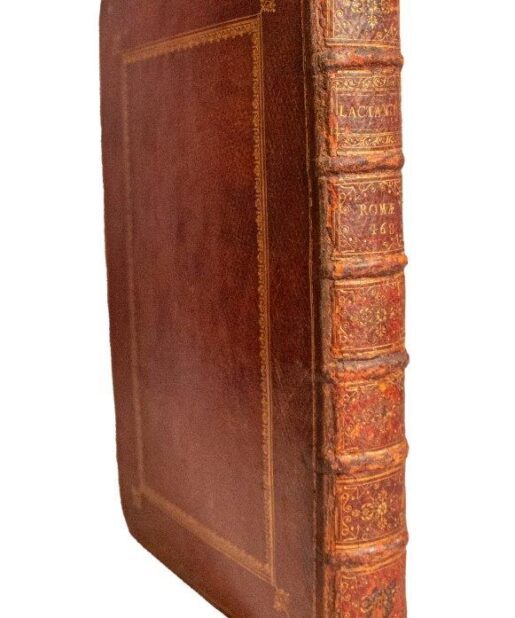
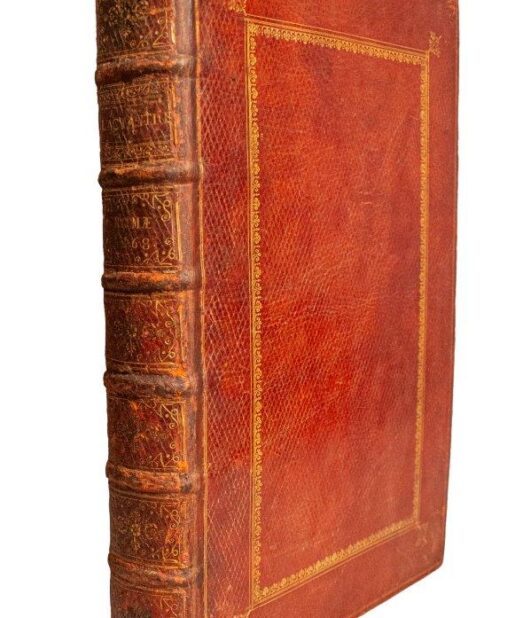
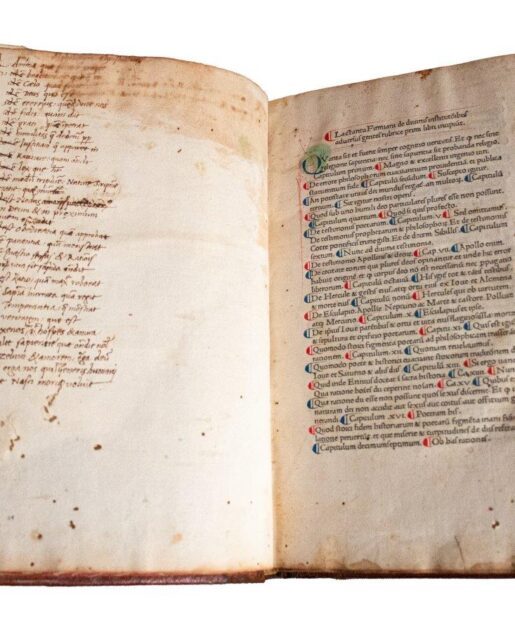
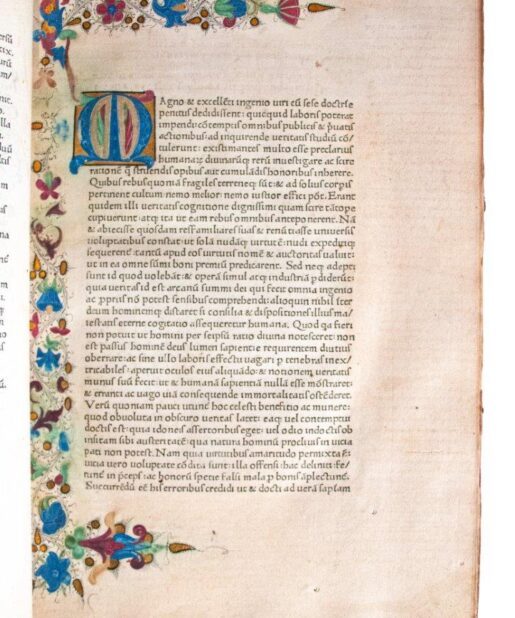
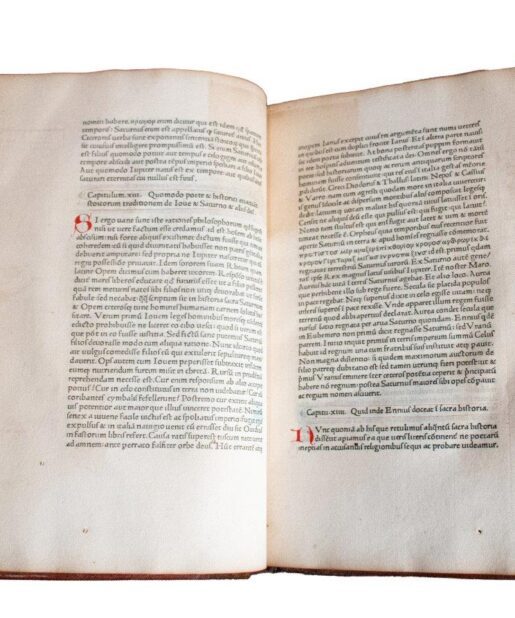
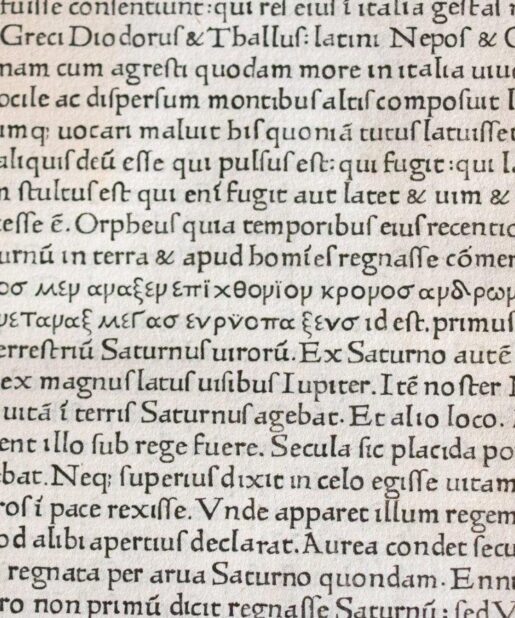
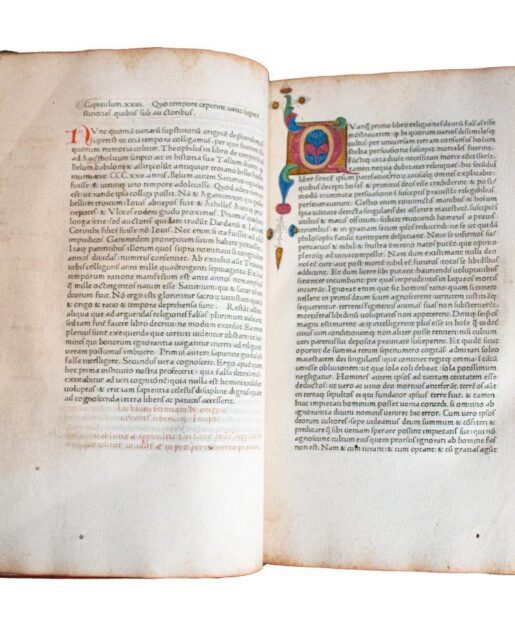
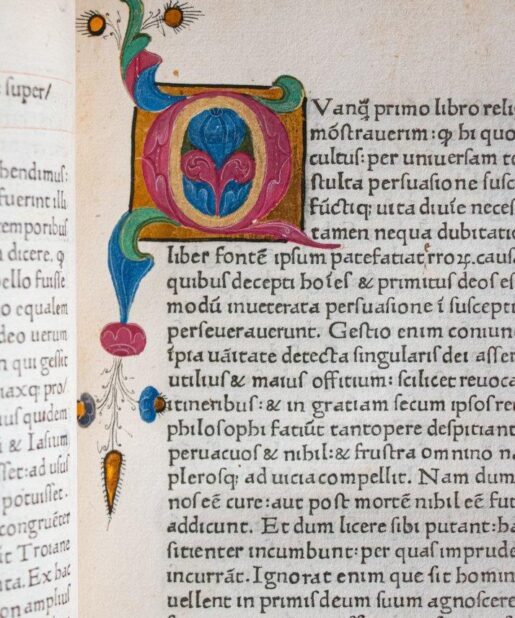
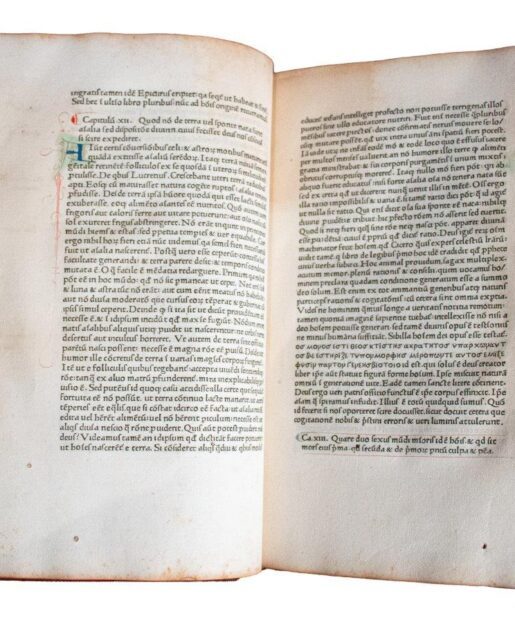
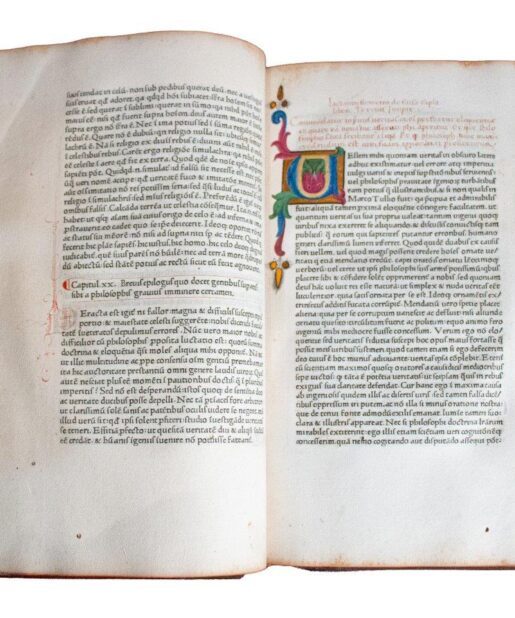
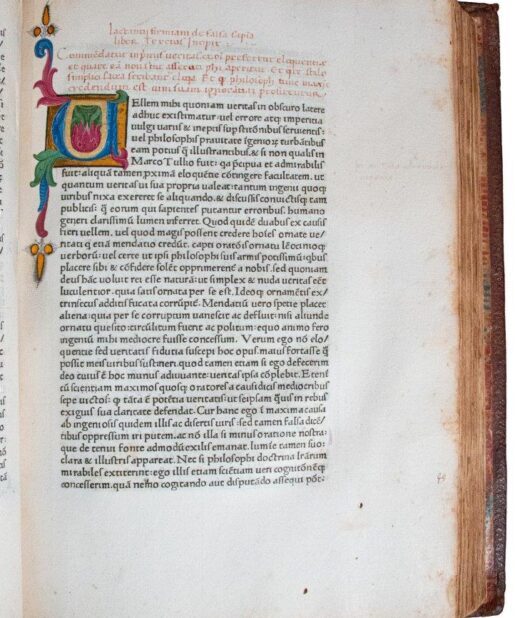
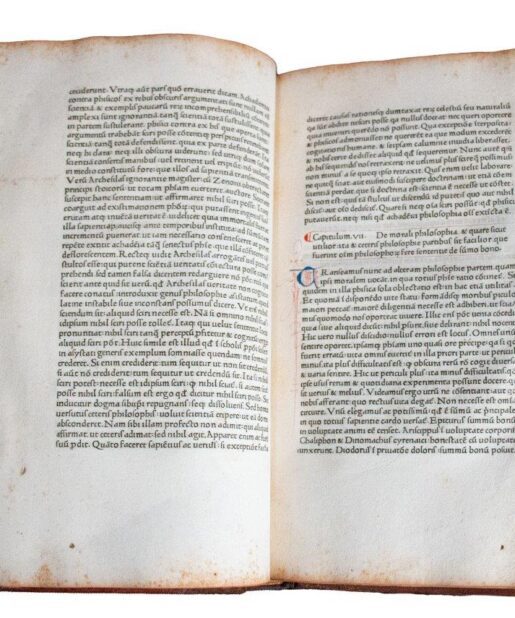
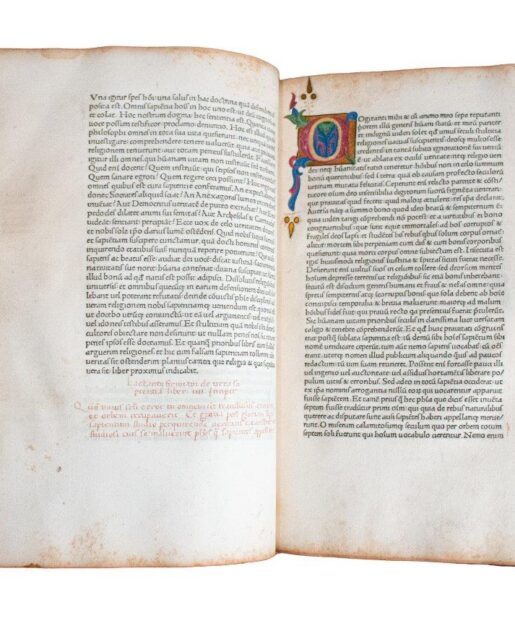
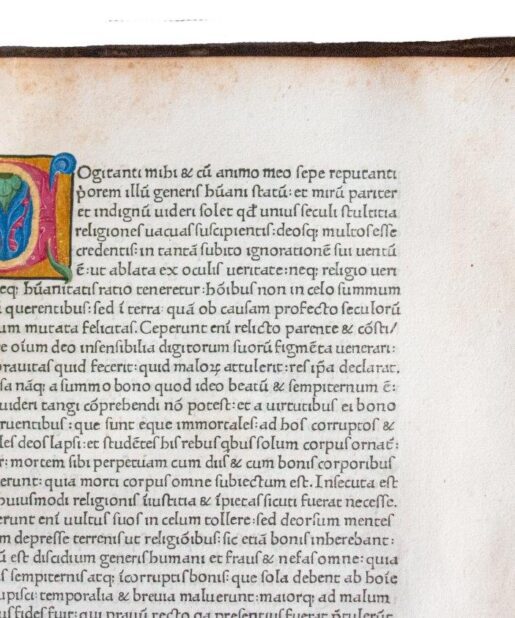
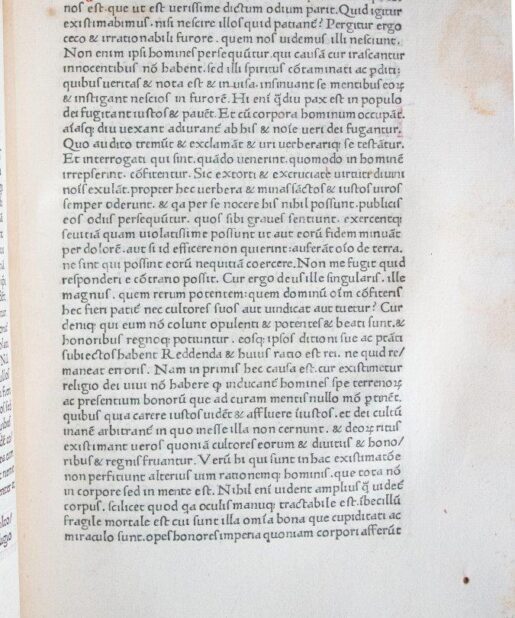
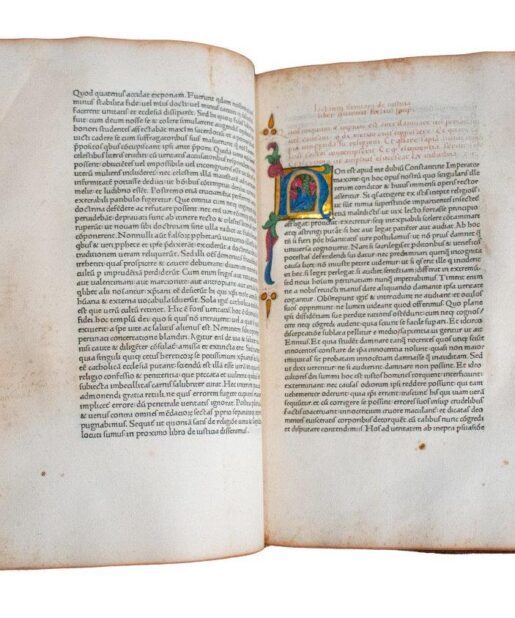
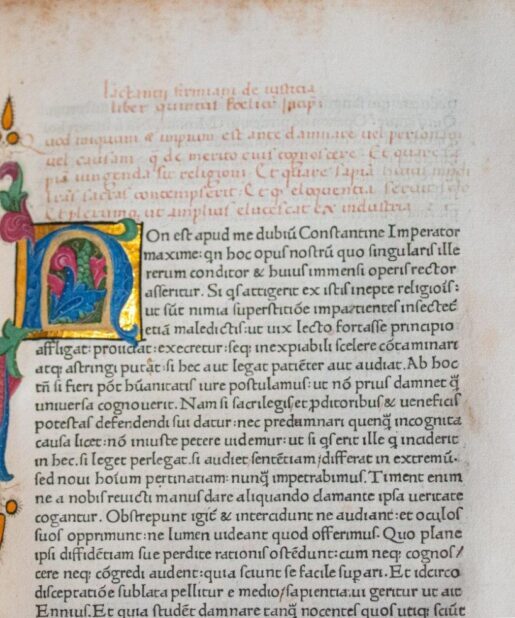
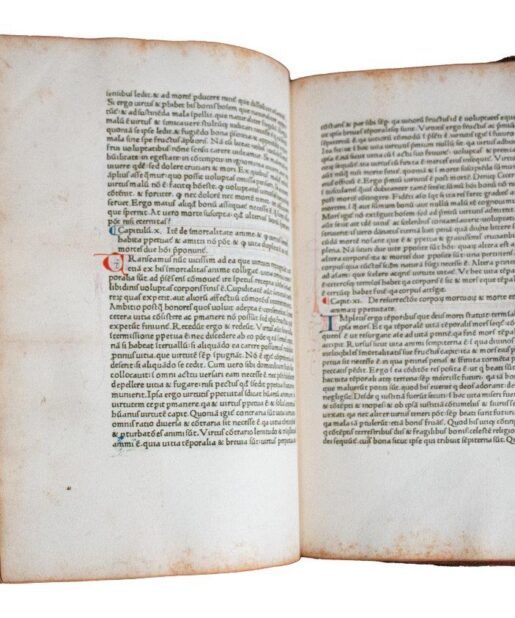
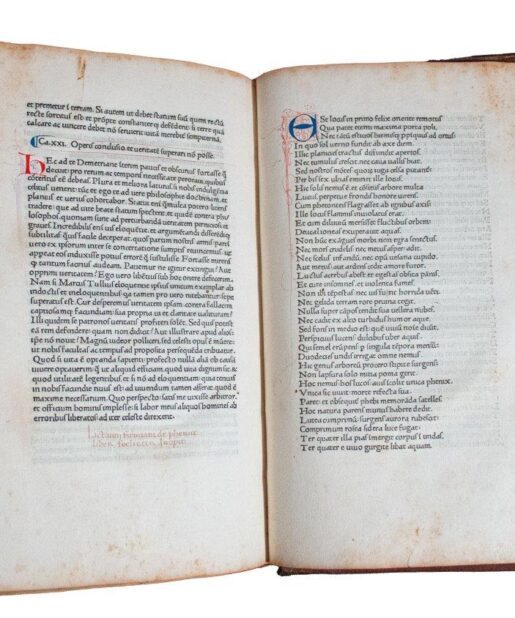
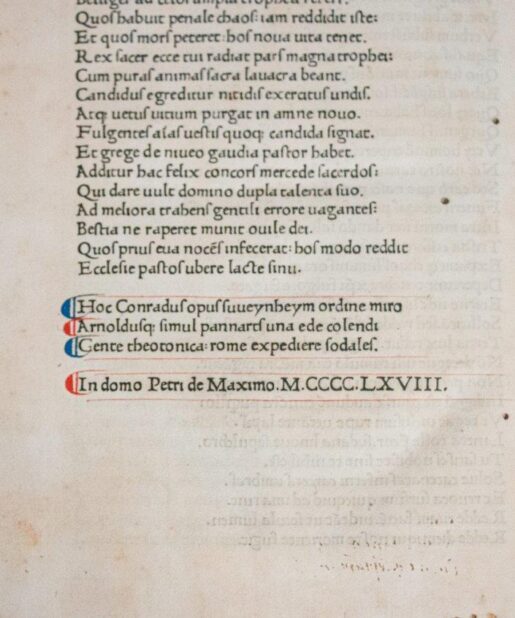
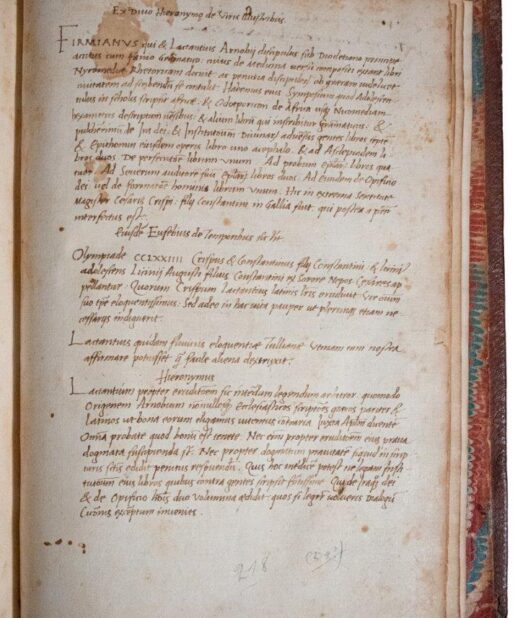
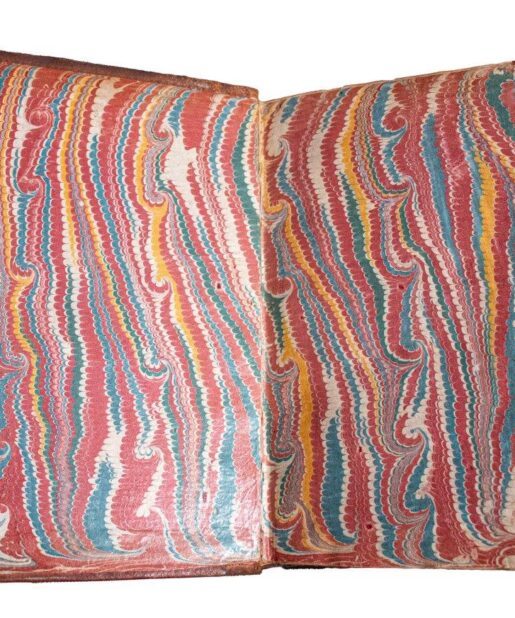
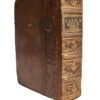
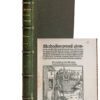
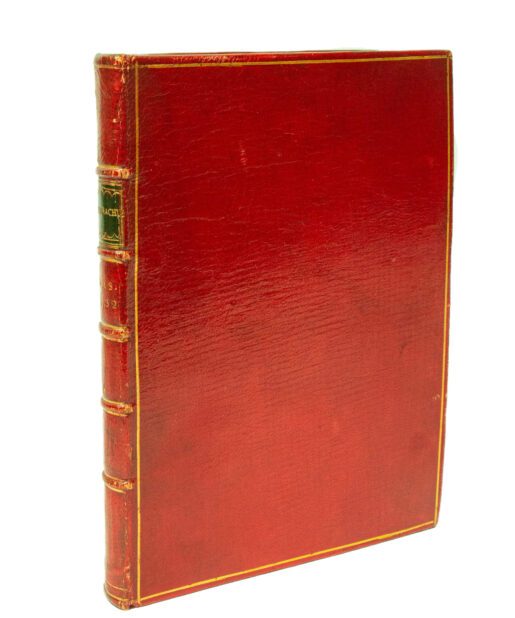
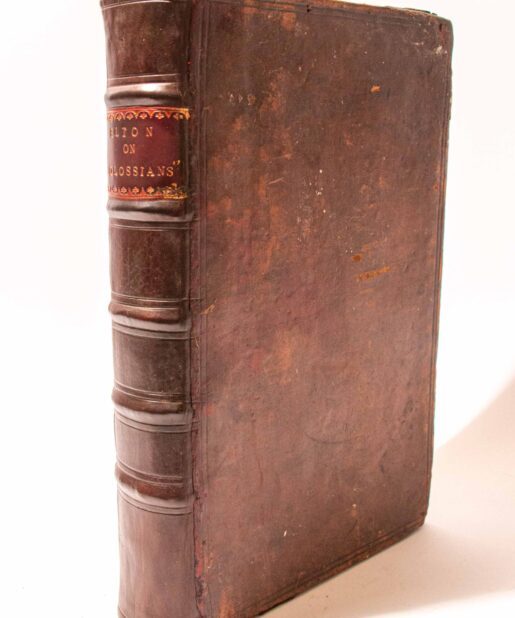
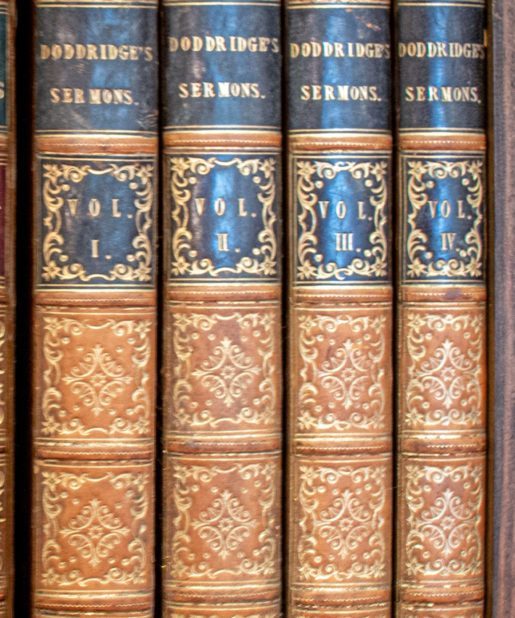
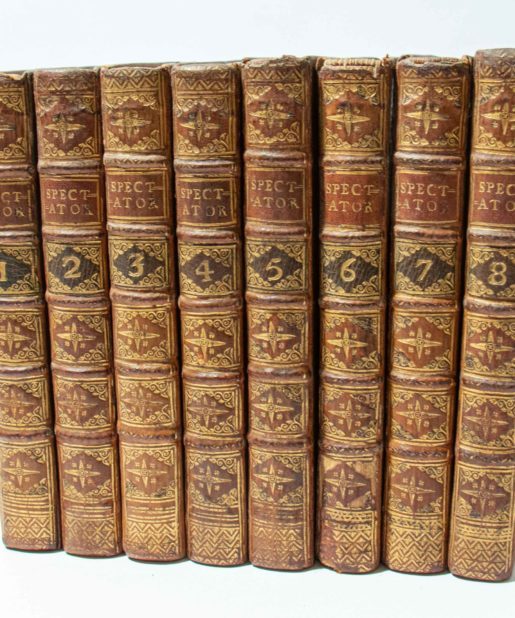
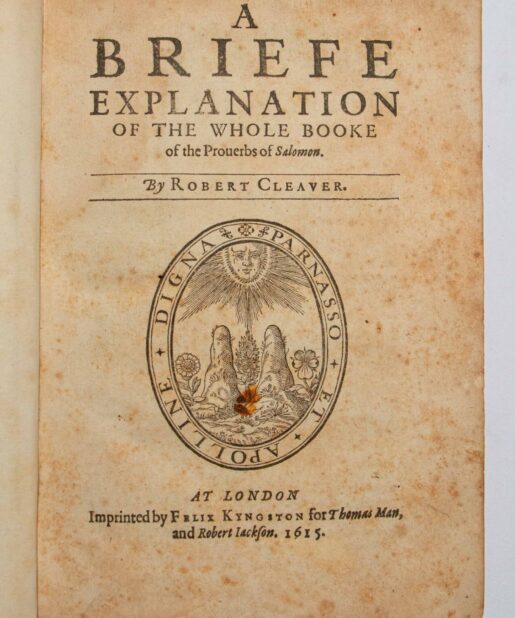
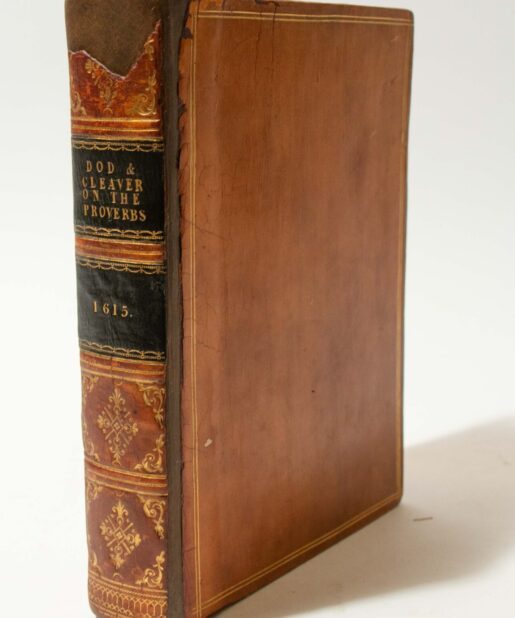
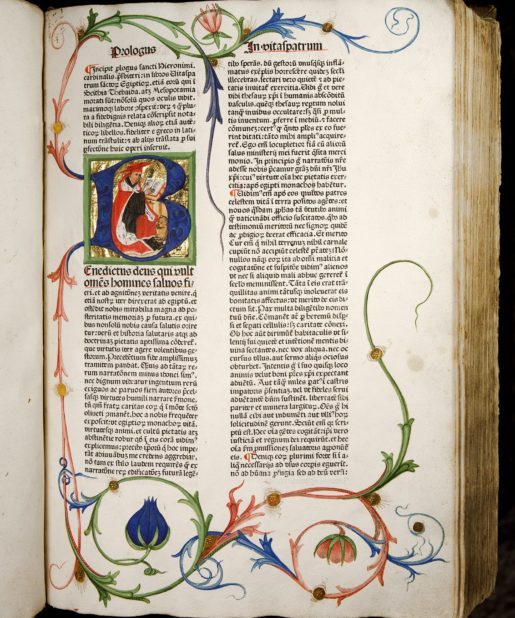
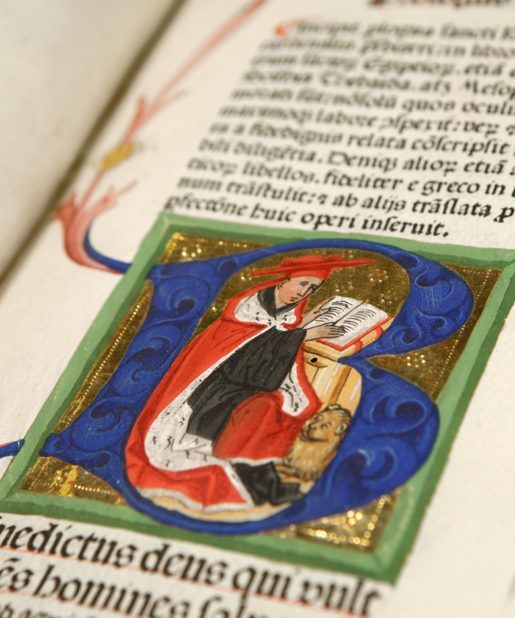
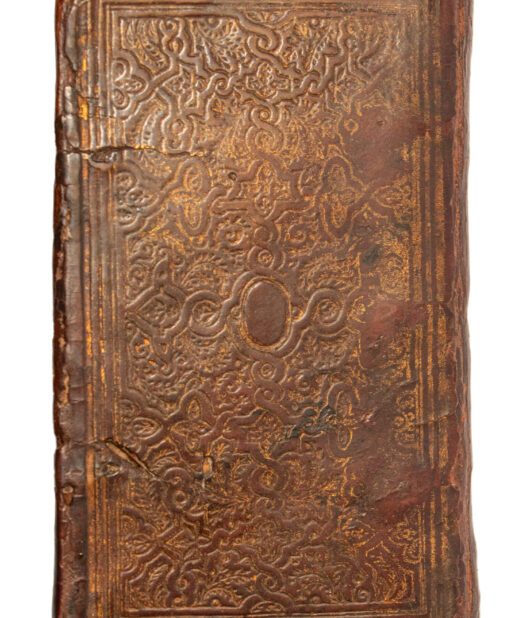
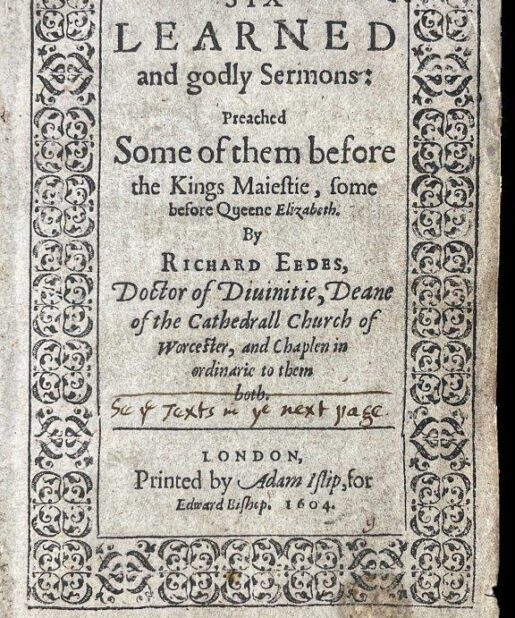
Reviews
There are no reviews yet.